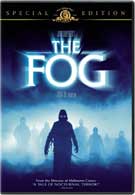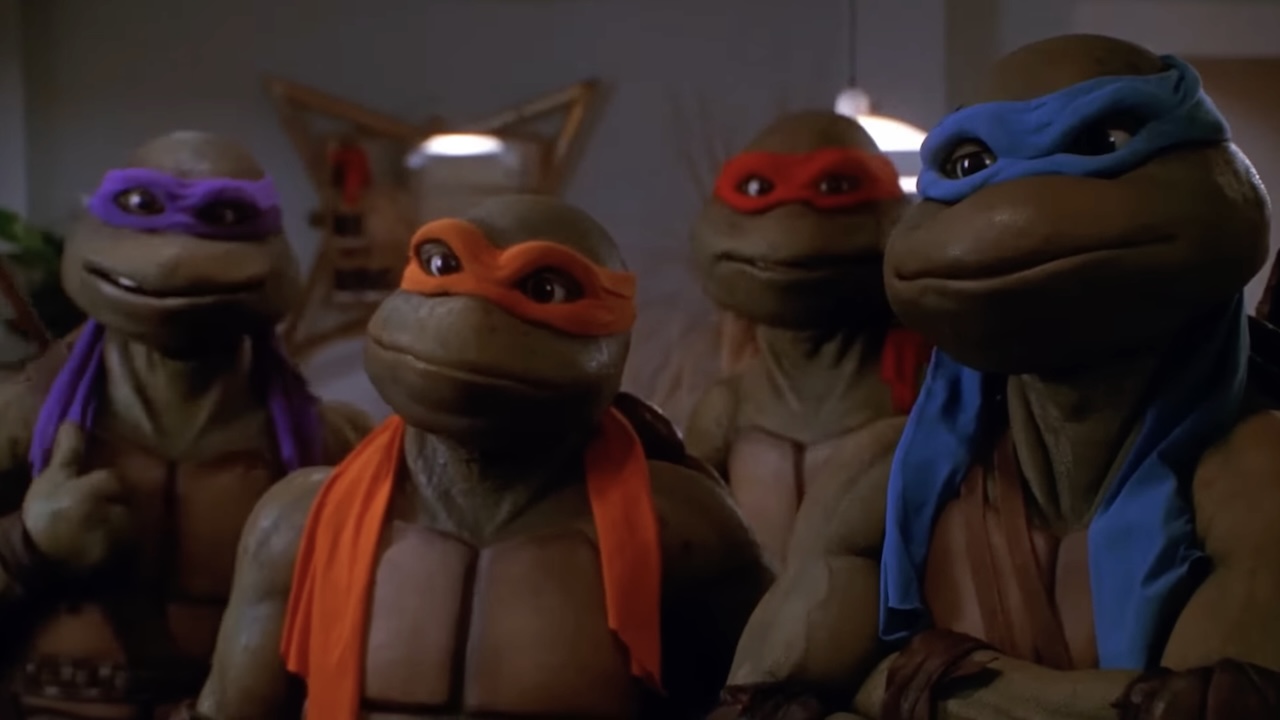John Carpenter has made a career out of cult success. Despite often not being the highest quality, there’s just something about Carpenter’s films that make them end up on lots of fanboy’s favorite movie lists. The films usually find success as cult classics even if they don’t find mainstream success. For me, it’s because Carpenter comes up with some great ideas and even if the execution isn’t fantastic the concepts keep my attention. Taking advantage of that, often Carpenter thrives on not showing us something, making it all the more frightening. When The Fog sticks with that philosophy it succeeds and when it strays and attempts to shock the audience it falls short, making it one of Carpenter’s most argued about films between those who love it and those who see it as his weakest film. The Fog served as a departure from the film that made Carpenter famous: Halloween. Halloween was a spooky, suspenseful slasher flick, so Carpenter set out to tell a different type of story with The Fog: an old fashioned ghost story. Appropriately enough, the film opens on the beach with an old timer telling a ghost story to a bunch of young campers, setting the tone for the movie as a whole. Little do the campers know the old man’s story of the Elizabeth Dane, a ship that was tricked into crashing on nearby rocks is more true then anyone in the town of Antonio Bay would like. As the sleepy little town celebrates its Centennial, the spirits of the past come back to collect what once was theirs through the cover of “the fog”.
As Carpenter proved with Halloween, he prefers strong female characters. The Fog is no different in that aspect, even going so far as to bring back the actress who carried the weight of Halloween on her shoulders. The advertising of the film centered around Jamie Lee Curtis’s character Elizabeth, a hitchhiker whose travels bring her to Antonio Bay just in time to experience The Fog. However Curtis is not the primary lead character. That would be Adrienne Barbeau’s Stevie Wayne, the owner of the local radio station whose sultry voice provides an air of stability and strength throughout the entire film. Although Stevie does less physically through most of the movie, her voice alone carries the movie. That’s quite a feat to throw on an actress, but Barbeau handles it all fantastically.
Antionio Bay is populated by more then just women however. Tom Atkins provides the machismo for the movie in the form of Nick Castle, a citizen of Antonio Bay who picks up Elizabeth and has a link to some of the events going on. Nick provides the glue that holds most of the characters together in the ensemble cast, and every once in a while he gets to be “the man”, although in a film full of strong female characters his chances are rare. The best acting on the male side comes from Hal Holbrook, looking oddly like Mark Twain, in the role of Father Malone, a priest who finds a journal of his ancestors, revealing the truth about Antonio Bay and the Elizabeth Dane.
It is that plot that Father Malone uncovers that takes up the bulk of the movie, bringing it to a grinding halt at times to reveal more plot. At times it feels like the entire movie exists just to get this plot device out there, which is hard criticism for a horror flick. It means that “horror” moments get put on hold to make sure the audience understands how everything fits together. The sad thing is, the bulk of the plot is revealed in the first five minutes of the movie in the old man’s campfire story. The rest of the exposition regurgitates a lot of what’s been said before. The pacing of the movie suffers badly because of this, creating the movie’s biggest weakness.
The second biggest weakness is the limitations set on the movie by the budget and technology restraints of the 1980s. For a movie that is surrounded by a mysterious fog, the fog effects should have been better. I’m not sure how a movie filmed in that era could have improved those effects, shy of switching to hand drawn animation, but it requires quite a bit of disbelief be suspended to buy that billowing clouds of smoke are fog. Still, when the fog effects work they add an eerie element to the film. It’s just a shame they don’t work more often.
Carpenter’s technique of scaring the audience with what they don’t see works well, although he strays from that from time to time in an effort to catch the audience off guard and spook them. Personally I’d rather he hadn’t resorted to that. Mysterious figures fading in and out of the fog is a hell of a lot more frightening then a ghoulish hand grabbing someone. The latter spooks you for one second, but the former is much more effective over the long term.
Effects aside, I would probably give The Fog a much higher rating if it wasn’t for the excessive exposition that dominates the film. I can forgive low budget effects a lot more then I can such poor organization. In the end The Fog is a letdown compared to many of Carpenter’s other films. The latest edition of The Fog comes just in time to celebrate the theatrical release of the remake. This is evident since a trailer for the remake is really the only new extra to be added to the disc, which sports a blue tint to the cover art instead of the previous green tint. Those are two minor changes to what was already a pretty good DVD release, so if you’ve looked at or picked up The Fog on DVD before now, there’s nothing here worth making you pick it up now.
Your Daily Blend of Entertainment News
There are two documentaries on the disc. The shorter of the two, “Fear on Film: Inside The Fog” is a vintage featurette that runs around seven minutes. Of that running time, almost half is made up of clips from the film itself. Obviously this was a short documentary used to promote the film to those who hadn’t seen it yet.
The longer documentary, “Tales from the Mist: Inside The Fog” runs almost half an hour long and uses footage from that short featurette as well as new, retrospective footage. Gong more in depth on the making and casting of the film, “Tales from the Mist” is a more complete look at the film as a whole, as opposed to the advertising element that dominates the other featurette. Particularly of interest are John Carpenter’s remarks about how the film as originally envisioned didn’t work. Apparently the film was shot, edited, and then viewed by a select few who agreed the film was pretty much crap. They went back and shot a lot of new footage, including the ghost story at the beginning, and the more visual elements of the movie that go against Carpenter’s philosophy of scaring people by not showing stuff. This explains why the movie is so redundant with the plot – the nice plot explanation at the beginning wasn’t originally there. It also explains why the movie is inconsistent with the visual work. Basically, in just a few comments Carpenter explains all of the movie’s shortcomings. It doesn’t make them go away, but at least there’s a reason for them.
Other bonus material include a commentary track by Carpenter and producer Debra Hill, picture galleries, advertising galleries (including trailers and stills), and a series of outtakes “and more!”. The “and more” consists of a hidden easter egg on the disc that shows more behind the scenes footage, specifically of technicians laying out the fog effects as the camera prepared to roll.
The Fog is a mediocre horror film from a master of horror, which means while it is weak, it still has some good elements to it. This isn’t the best DVD release for a John Carpenter flick (The Thing and Big Trouble in Little China have some excellent two-disc releases) but considering it’s really only a re-release to cash in on a remake, it’s better then a bare bones edition. I suggest checking out some of Carpenter’s other films though, and leaving The Fog alone.

